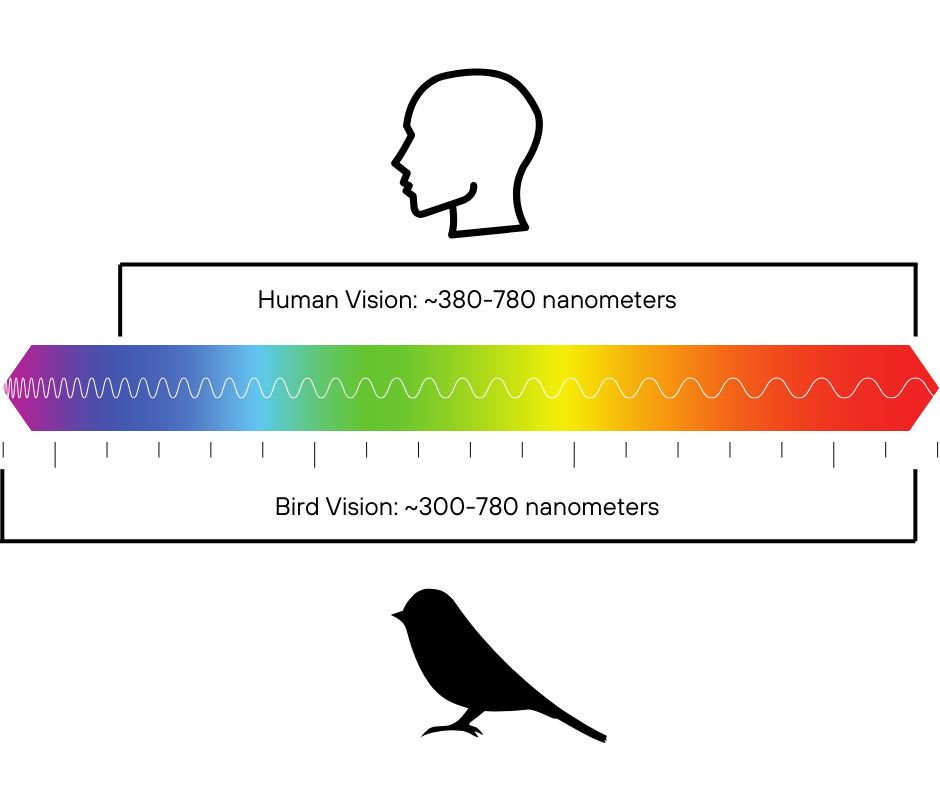
By Delanie Bruce, Bird Conservancy of the Rockies & Nebraska Game and Parks Commission
Birds possess remarkable vision, and thanks to the intricate structure of their eyes, they can see what humans cannot. Viewing the world through the eyes of birds can open up a new perspective on how these creatures perceive their surroundings. It also offers insight about color and light that differs from the human experience.
The retina, a light-sensitive layer at the back of the eye, plays a pivotal role in capturing visual information. Covered in photoreceptive cells known as rods and cones, the bird’s retina contains four types of cone cells that enable them to distinguish between various colors of light. This color vision is particularly essential for diurnal birds that are active during the day, as it aids them in identifying prey, mates and potential threats.
While humans can see light within the visible spectrum of around 380 to 780 nanometers, birds extend beyond this range into ultraviolet wavelengths. Initially observed in pigeons by researchers in the 1970s, the ability to perceive ultraviolet light has since been found in many other bird species.

Recent studies have shown that UV vision plays a crucial role in mate choice among songbirds, with males and females often exhibiting sexually dichromatic features visible only in the ultraviolet spectrum. By using advanced tools like spectrophotometers, researchers can quantify the reflective properties of bird feathers and gain insights into how birds perceive each other.
Moreover, UV vision aids birds in tasks such as locating food sources, identifying predators and navigating their environment. From seed-eating songbirds to raptors hunting for prey, the ability to detect UV signals enhances their survival skills and foraging efficiency. For instance, American kestrels have been observed using UV reflectance from voles’ urine trails in grasses to pinpoint their prey with remarkable accuracy.
As scientists continue to unravel the mysteries of avian UV vision, new discoveries are reshaping our understanding of how birds perceive the world. By studying the intricate connections between UV light and bird behavior, we can gain valuable insights into the evolutionary adaptations that have shaped avian visual systems over millions of years.
